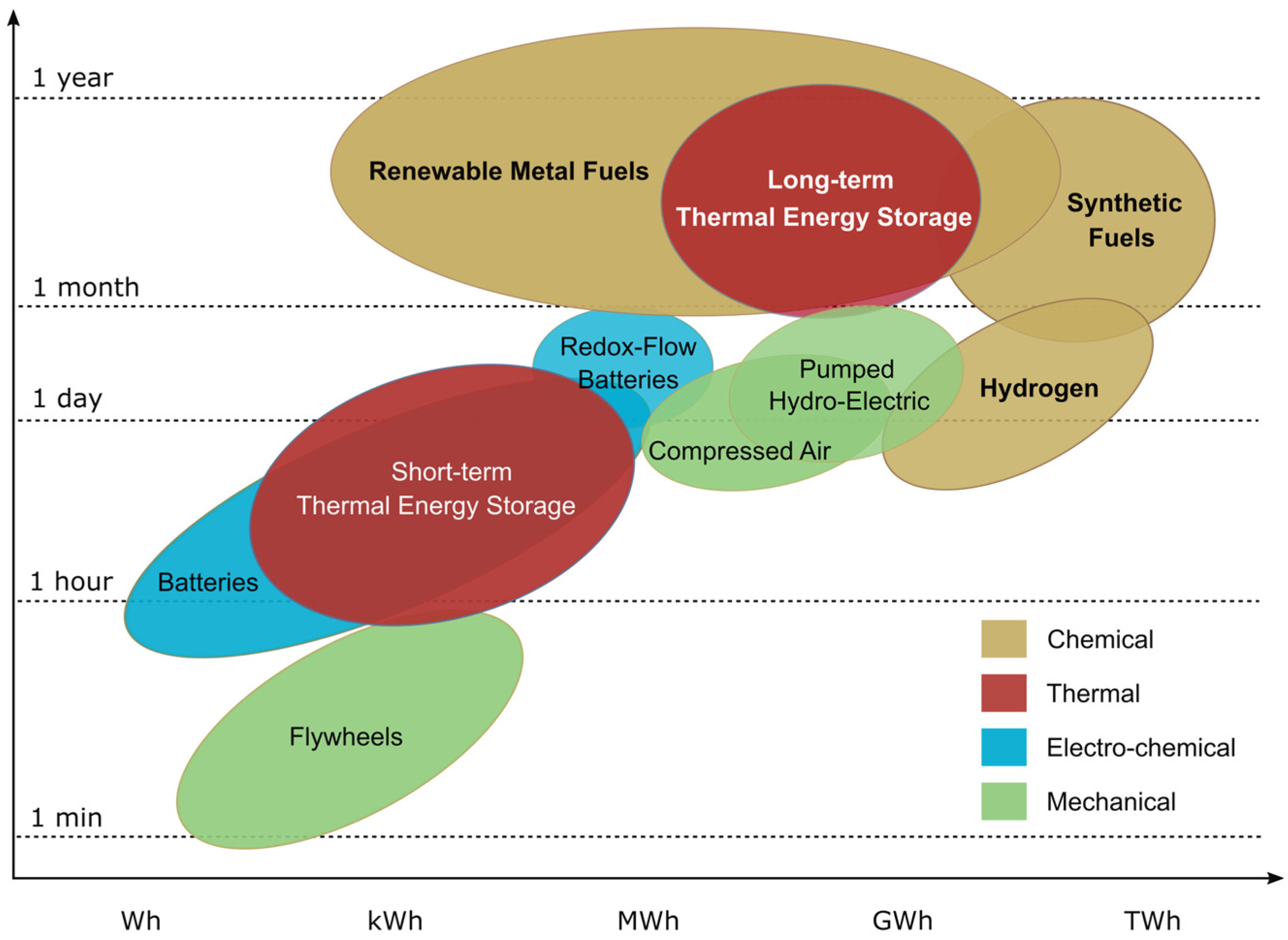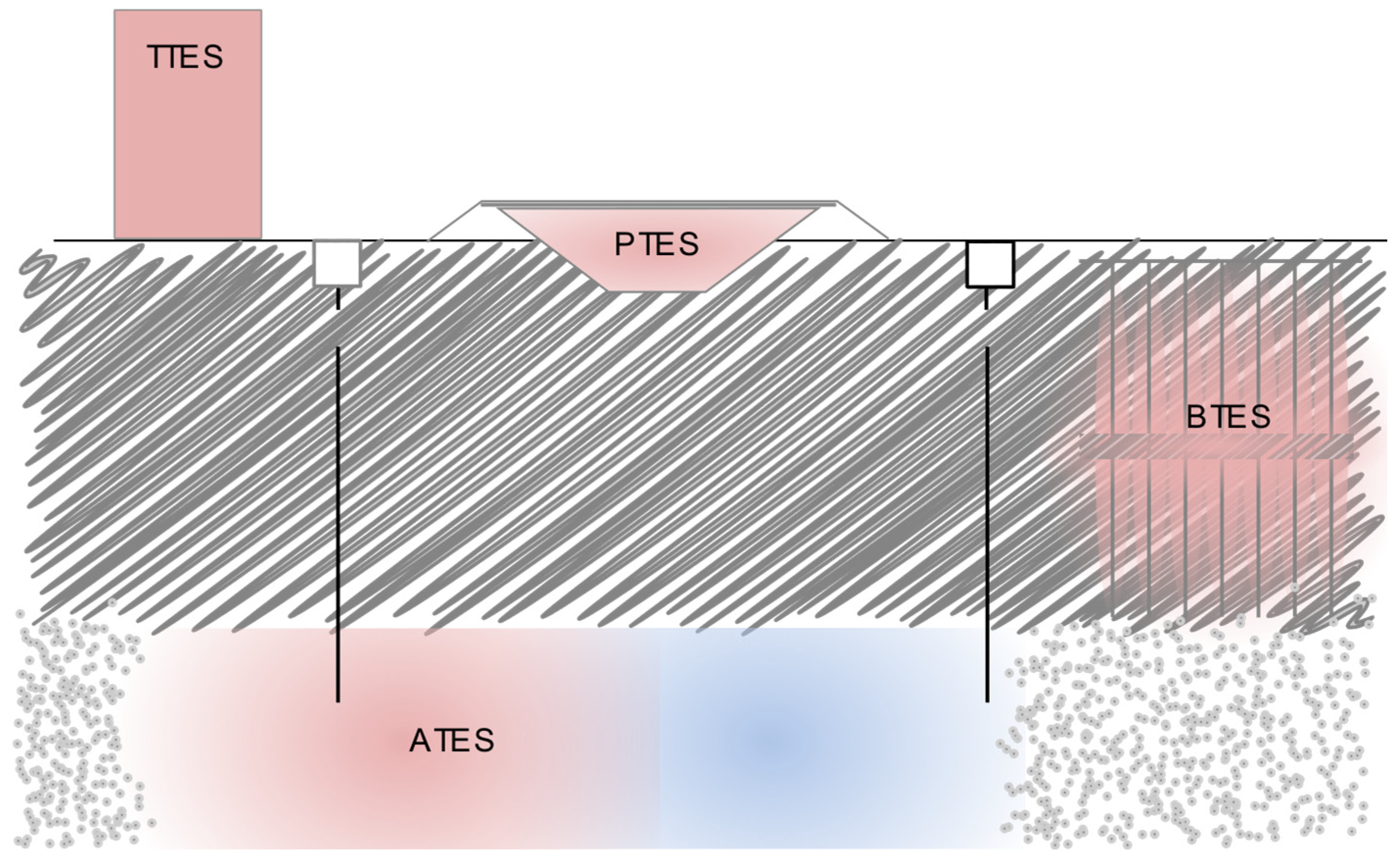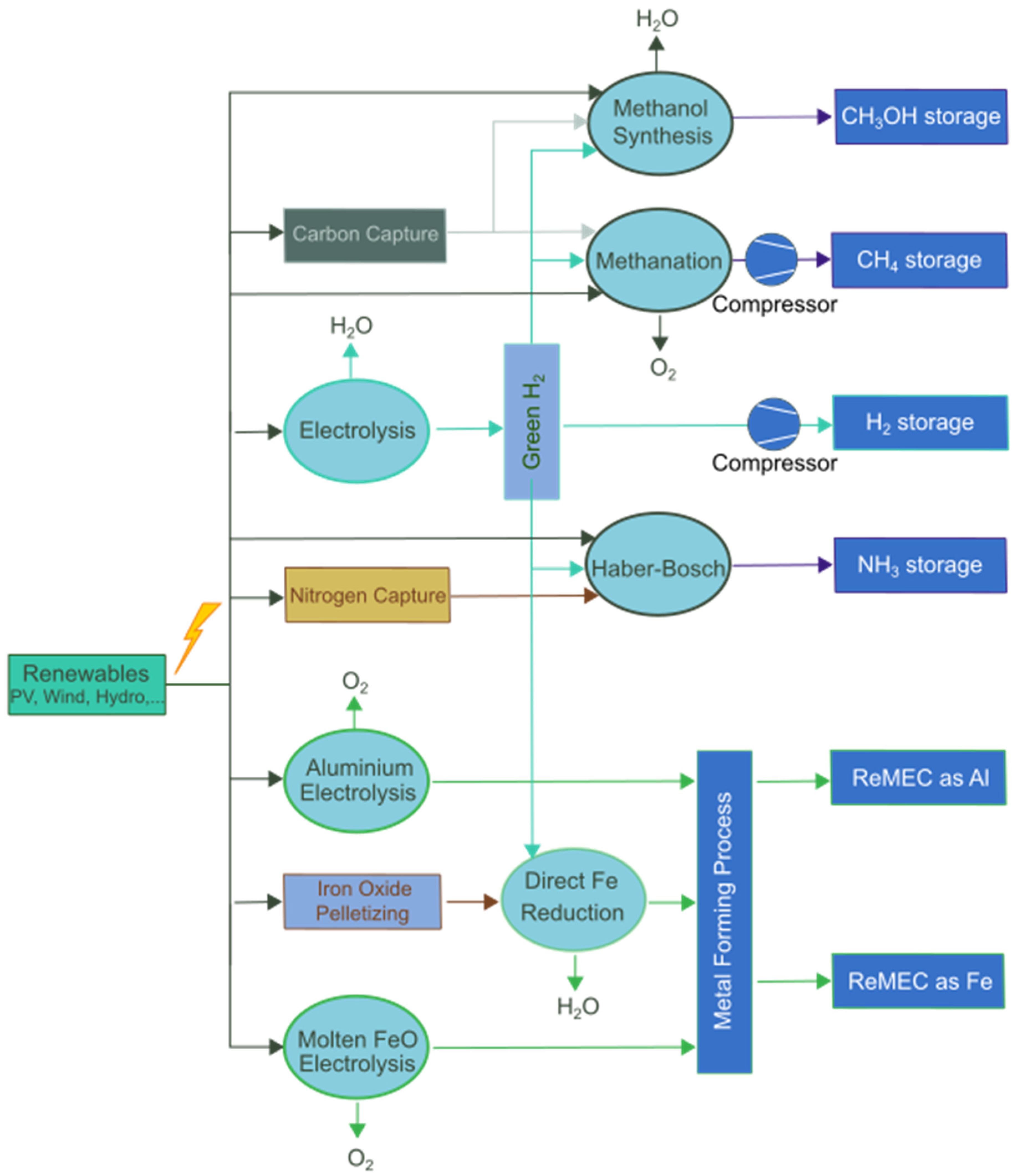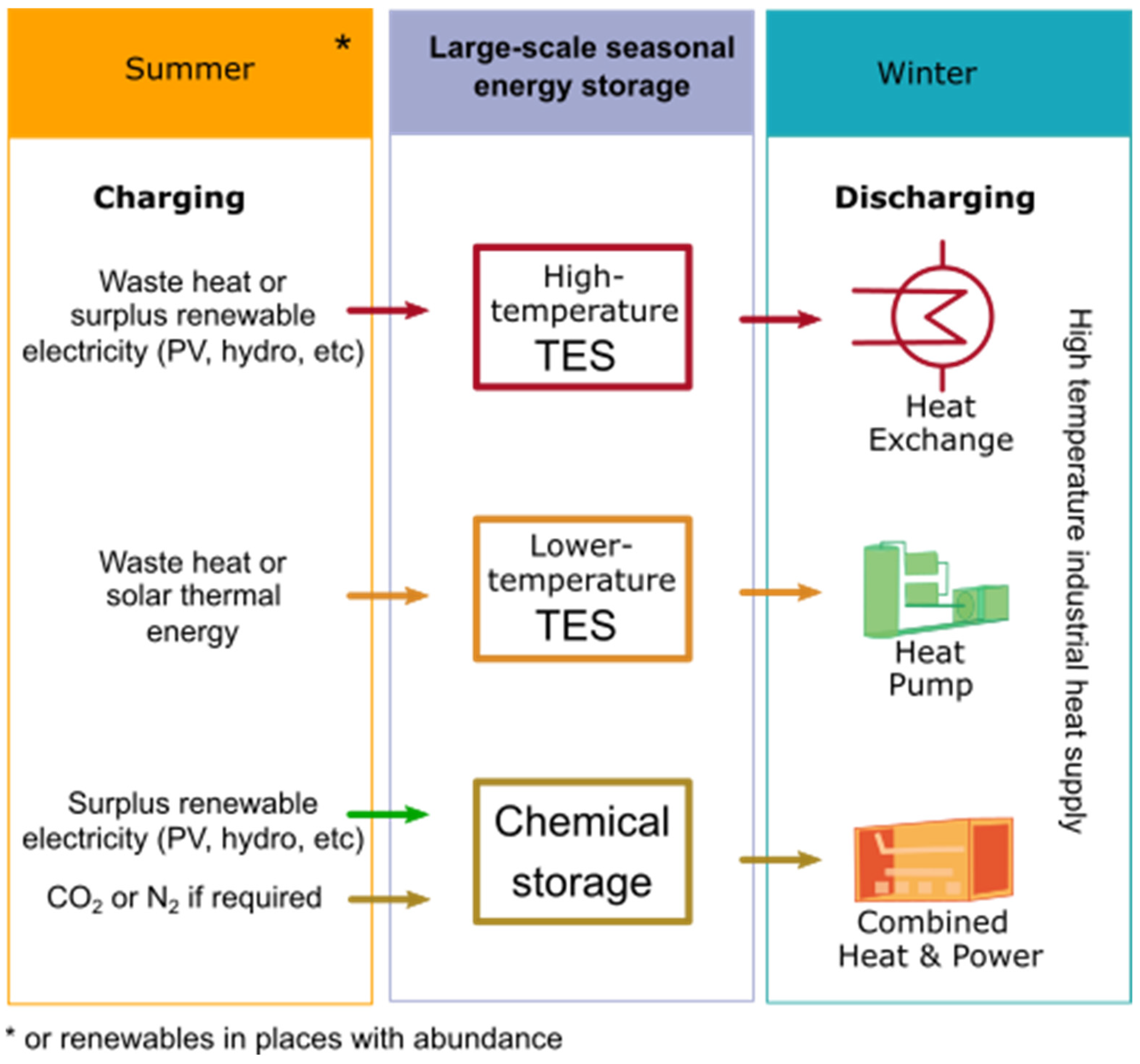This study reviews Thermal Energy Storage (TES) and Power-to-X (P2X) technologies for applications without thermal grids, assessing their feasibility, state of the art, opportunities, and challenges.
Highlights:
- Underground TES (UTES), such as aquifer and borehole storage, offer 1 to 26 times lower annual heat storage costs than above-ground tanks.
- For P2X, hydrogen storage in salt caverns is 80% less expensive than in high-pressure tanks. Methane and methanol storage costs depend on CO2 sourcing, while Renewable Metal Energy Carriers (ReMECs), such as aluminum and iron, offer high energy density and up to 580 times lower storage volume, with aluminum potentially achieving the lowest Levelized Cost of X Storage (LCOXS) at a rate of 180 EUR/MWh of energy discharged.
- Underground TES and hydrogen caverns are cost-effective but face spatial/geological constraints.
- P2X alternatives have established infrastructure but have lower efficiency, whereas ReMECs show promise for large-scale storage.
- Economic viability remains a challenge due to very few annual cycles, which require significant reductions of investment cost and annual cost of capital (CAPEX), as well as improvements in overall system efficiency to minimize losses. These findings highlight the trade-offs between cost, space requirements, and the feasibility of SES deployment in industry.
Keywords:
Decarbonize industrial heat, Seasonal energy storage, Thermal energy storage, Power-to-X, Renewable metal energy carriers, Sector coupling
Corresponding authors:
Eastern Switzerland University of Applied Sciences (OST)
- Yvonne Bäuerle, Institute for Solar Technology (SPF), yvonne.baeuerle@ost.ch
- Michel Haller, Institute for Solar Technology (SPF), michel.haller@ost.ch
- Cordin Arpagaus, Institute for Energy Systems (IES), cordin.arpagaus@ost.ch



